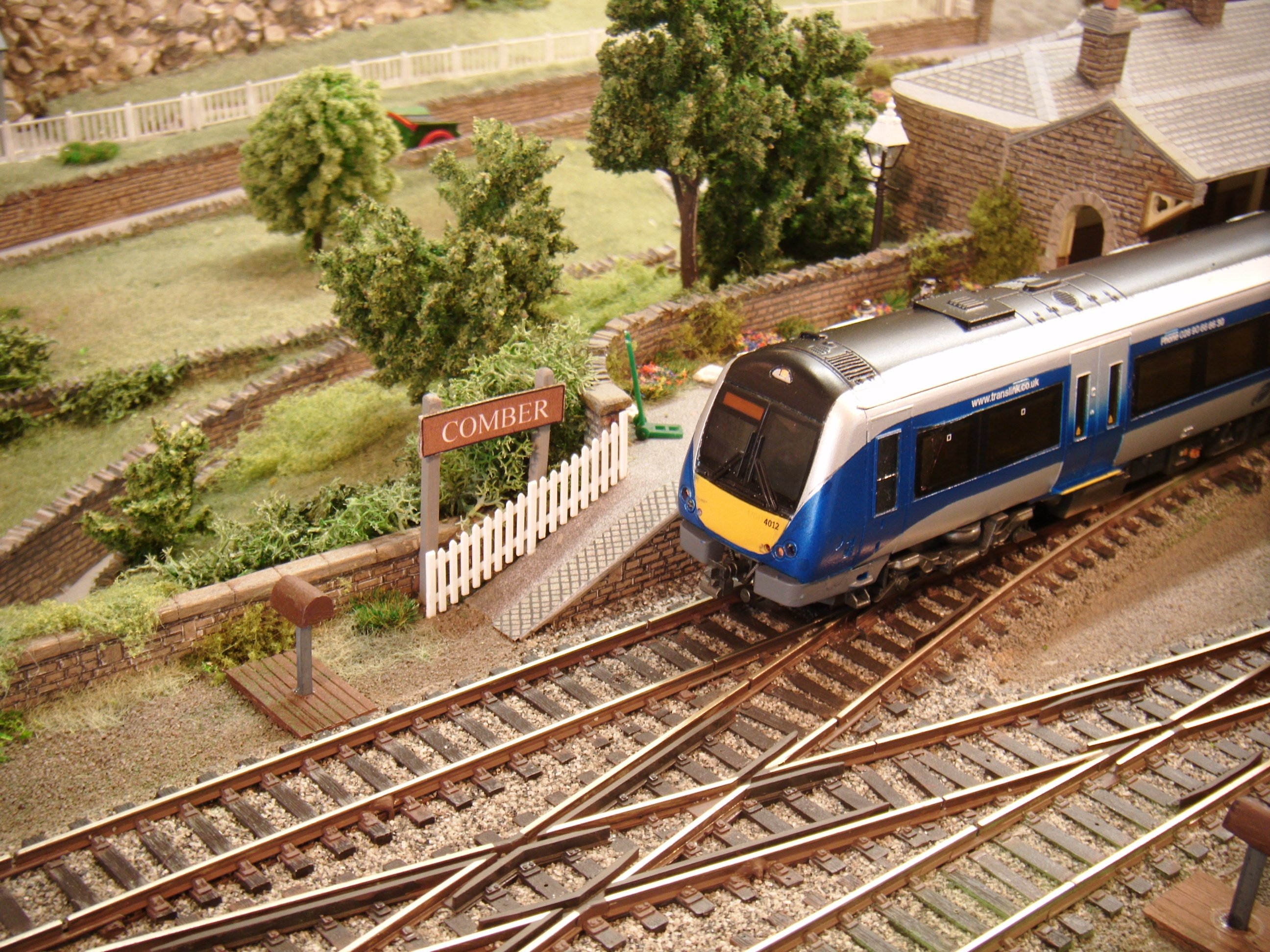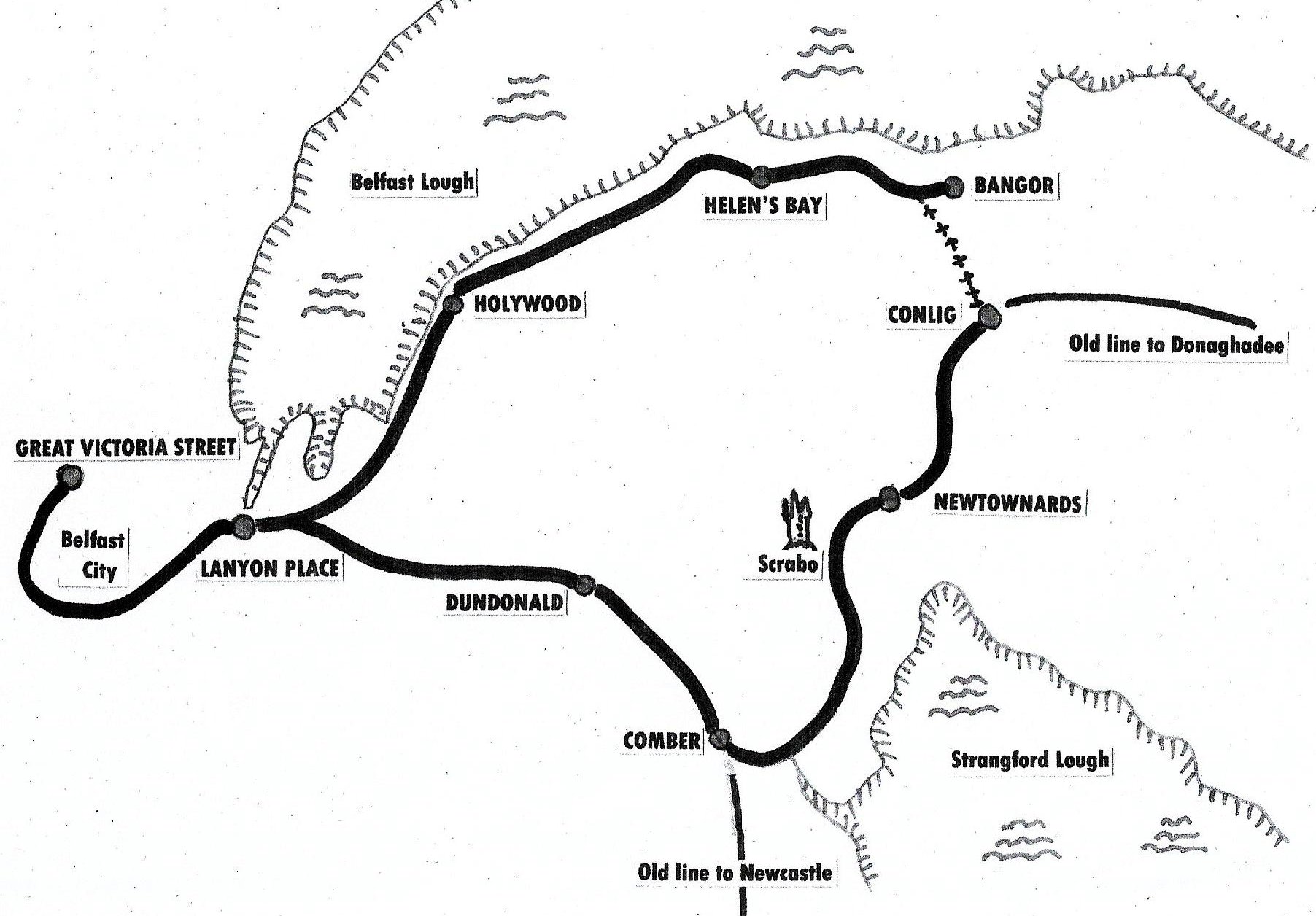
The plan view of the layout of Comber Railway station.

The list of all stations on the BCDR railway line
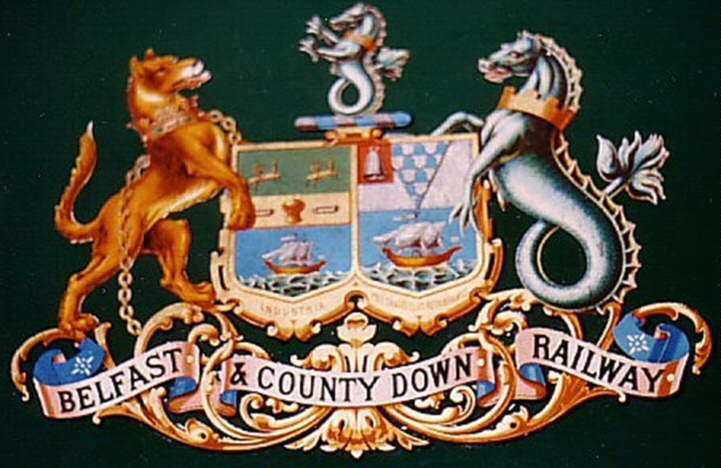
Belfast and County Down Railway Coat of Arms.
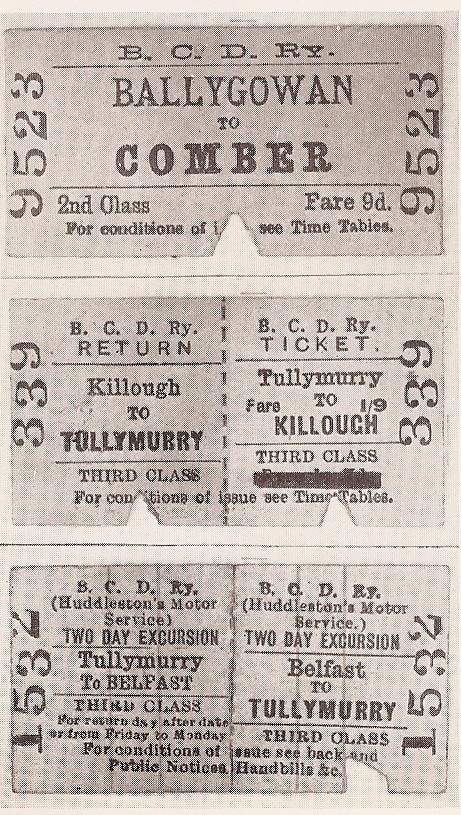
A small collection of tickets issued on the BCDR Line.
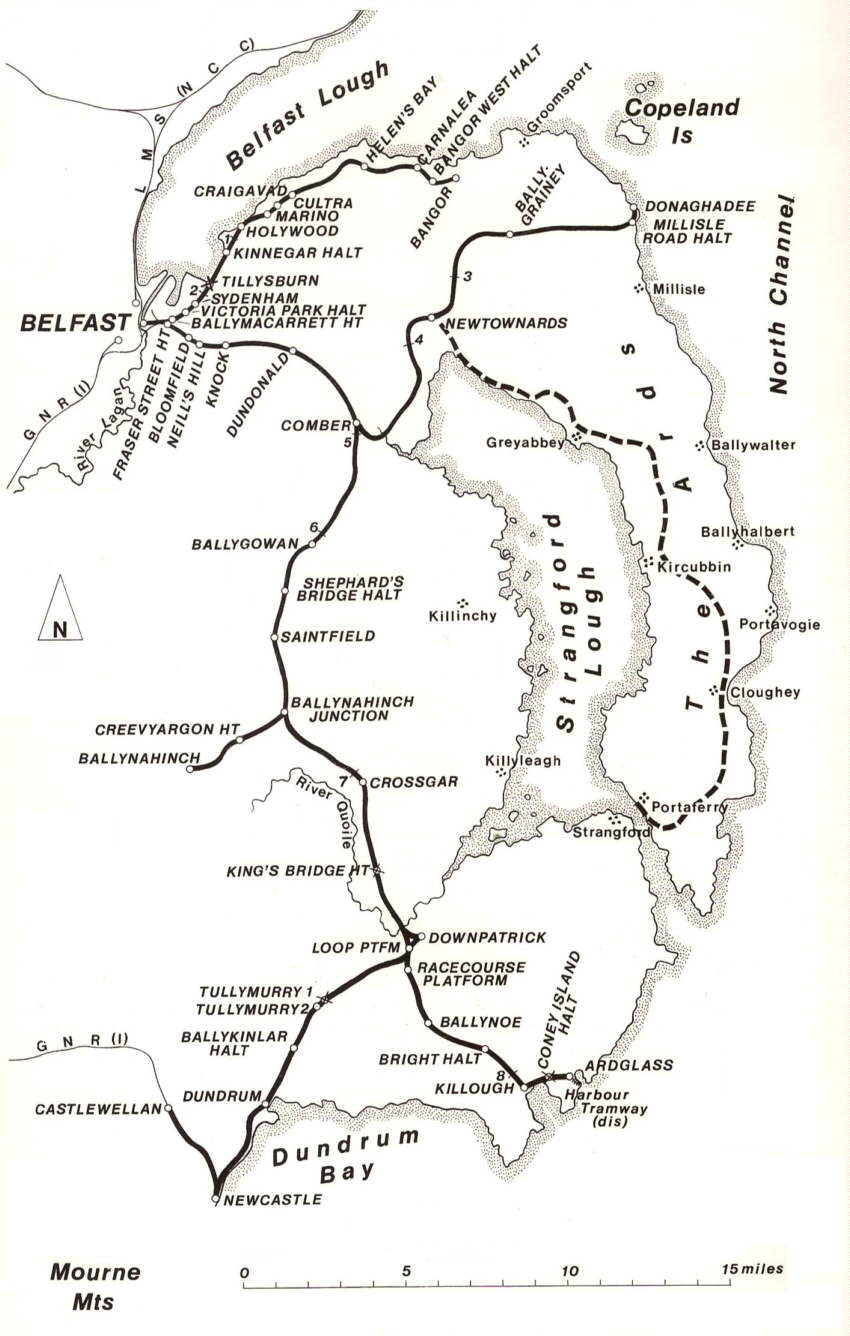
The map of the stations on the BCDR Line.

The Andrews siding on the BCDR line at Comber

The Goods Yard at Comber BCDR.
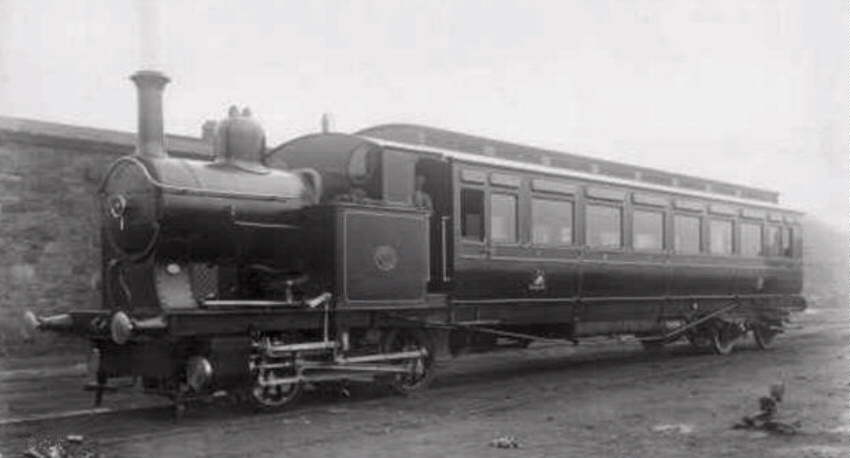
Steam engine with integral carriage probably stopped in Comber
This is a most unusual train or "Rail Bus" it may be more correctly classed as a "Rail Motor"
which is a very rare vehicle. If you have any information regarding this engine we would
love to hear from you.
Copied from the Website at:-
http://dundonaldrail.users.btopenworld.com/pastpic4.htm
This picture shows a BCDR Railmotor. Three of these were built, two in 1905 and one in 1906. They were numbered separately from the main locomotive stock as Nos. 1, 2 and 3. This photo is of No. 1. They were used as local trains from Belfast to Holywood and Dundonald until 1918.
UPDATE
It would appear that these engines were constructed by Kitson’s
of Leeds which went out of business during the 1930s.
Three railmotors were supplied to BCDR but they were not identical.
Motors No 1 and No 2 were 50 ft long and seated 60 passengers.
No 3 was 63 ft 6 ins long with 76 seats.
All three railmotors were used extensively and by the time World
War One came about they were wearing out.
No 3 railmotor derailed at Ballymacarrett because of unreported
damage caused the previous night. By November 1915 No 3’s
firebox was badly damaged and needed serious repair.
It was decided to purchase a replacement railmotor for No 3 during
October 1916 but permission to purchase was denied because
of the war.
The other engines eventually became unusable because of boiler
tube and valve failures.
Citation #1
Bob Rush (British Steam Raiicars, Oakwood Press 1971)
Citation #2
Desmond Coakham, An Irish Railway Pictorial, Midland Publishing 2003
Coakham is a prolific author of many books on the subject of trains
and coaches.
|
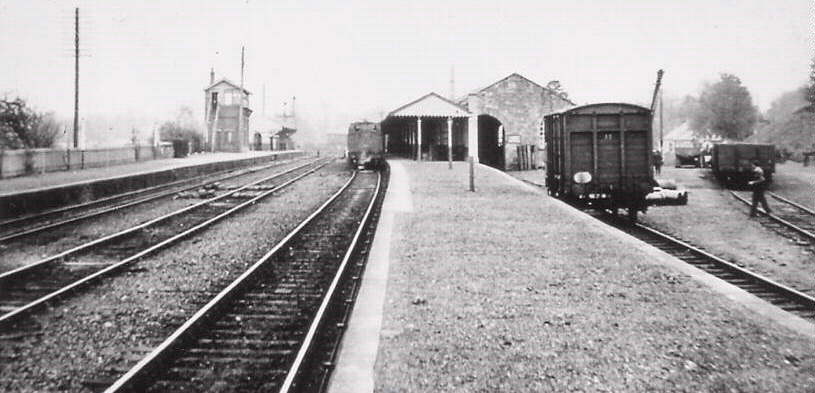
Comber Railway Station, view looking towards Newtownards and Newcastle.
The shed still exists and is now used by the Northern Ireland Fire and Rescue Service.
The line has become the bed for the Comber Bypass.
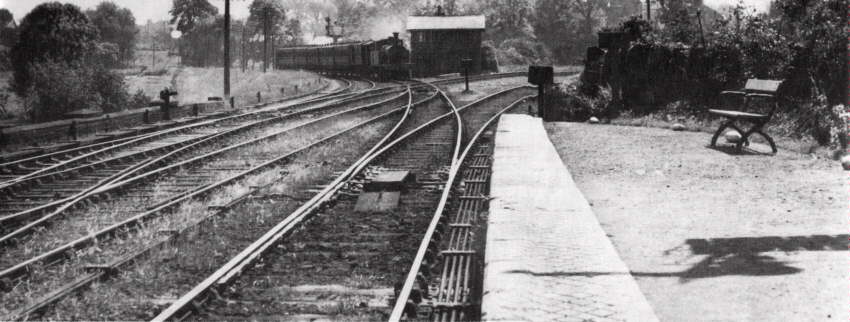
Comber, Train arriving from Donaghadee via Newtownards.
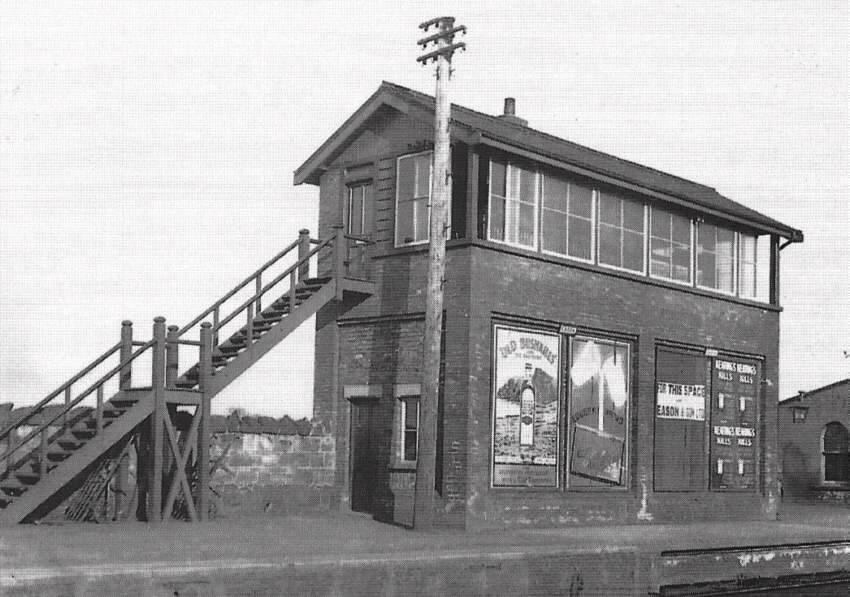
The Signal Box at Comber BCDR

The front of the Old Railway Station at Comber.
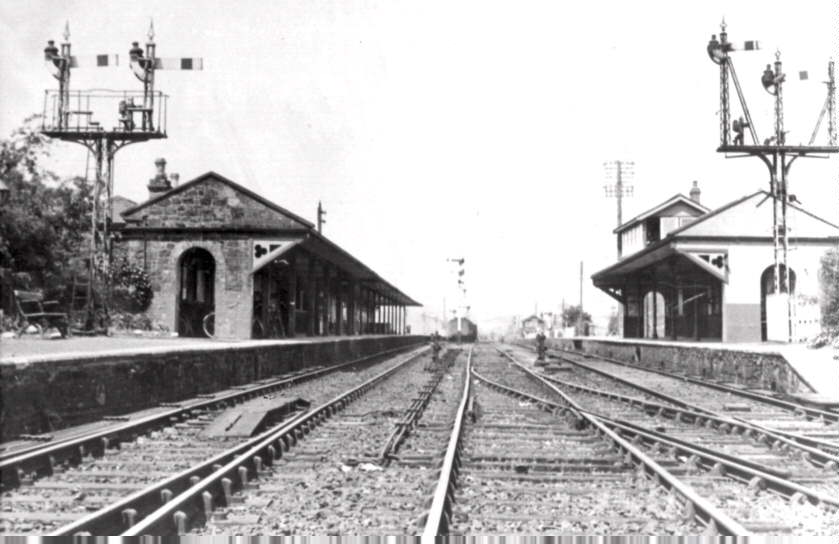
Comber Railway Station.
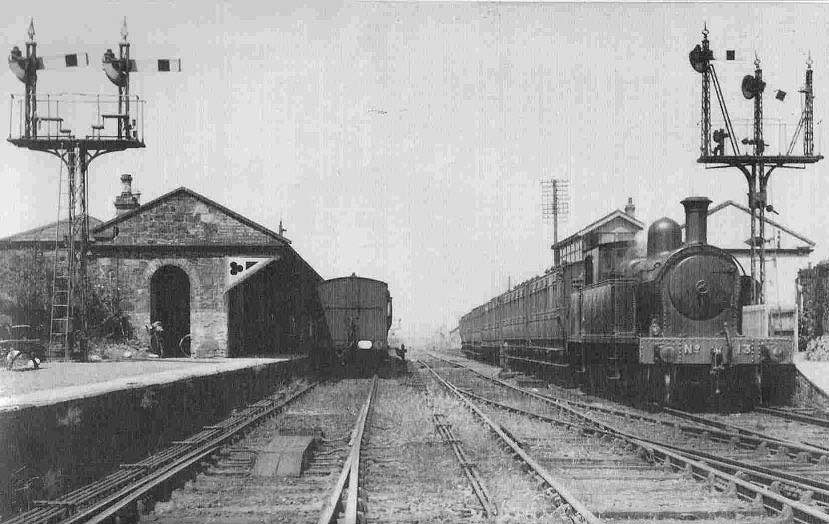
Comber Railway station with stationary trains.
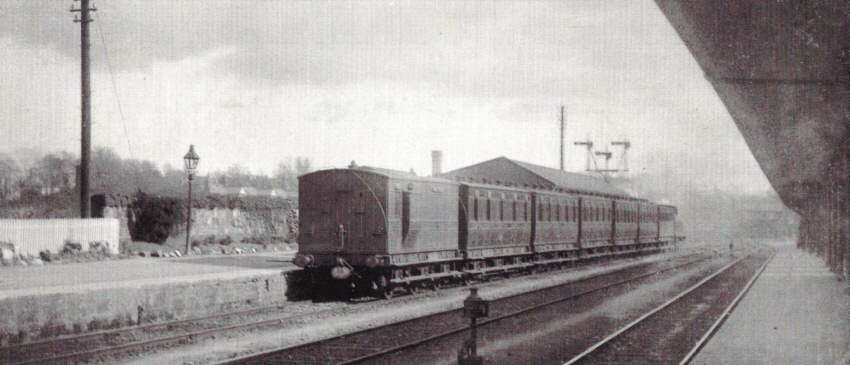
Comber Railway Station.

A view of the houses in Railway Street Comber, the white building to the right
is now the TT Restaurant and Lounge.
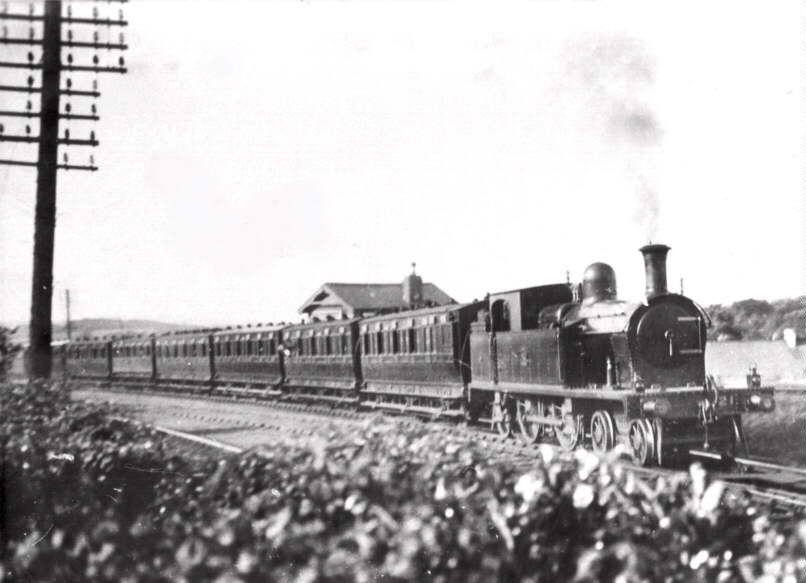
A train on its journey from Comber on the line towards Newcastle.
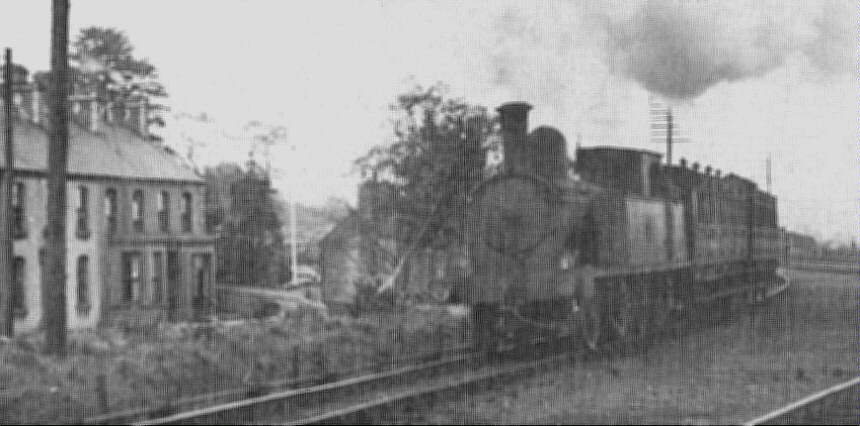
Engine No 5 leaves Comber with the lunchtime train for Ballynahinch.
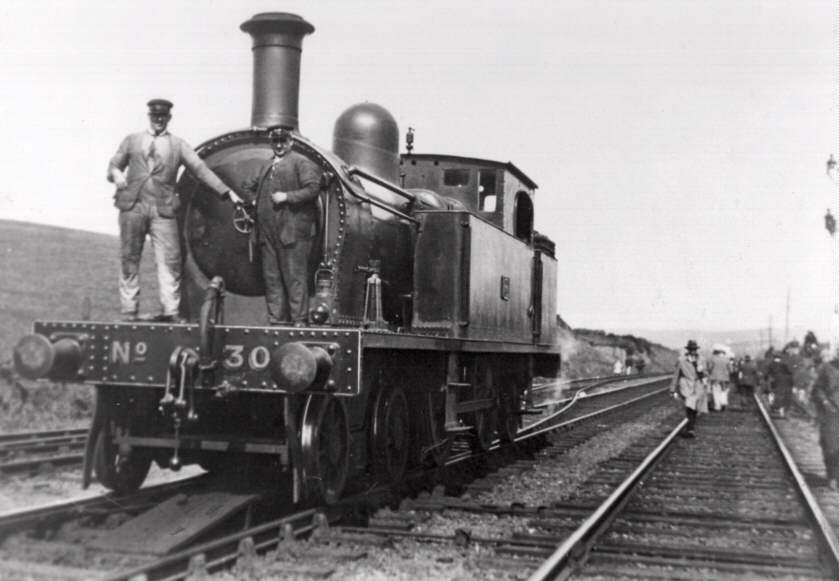
Engine No. 30 Leaving Comber.
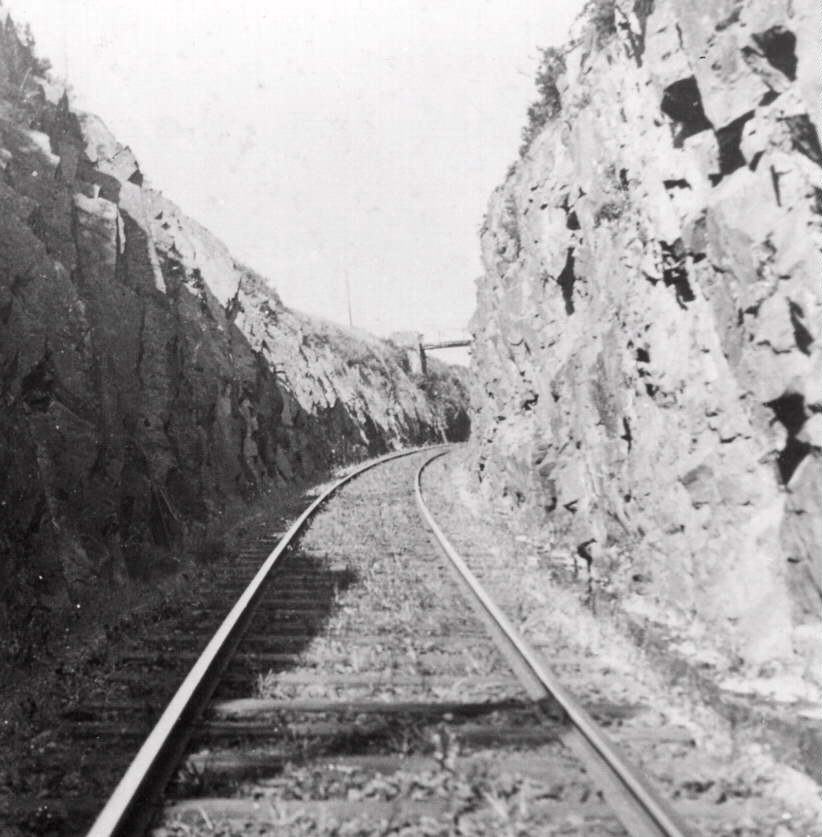
An unidentified railway cutting close to Comber on the BCDR.
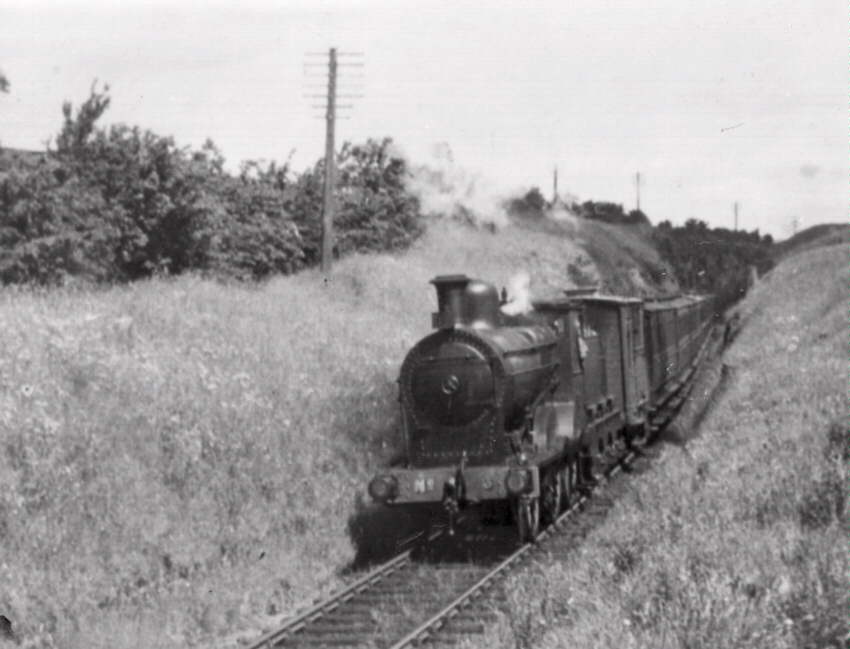
The "Gullet" cutting just outside Comber BCDR..

Unidentified train at Comber Station.
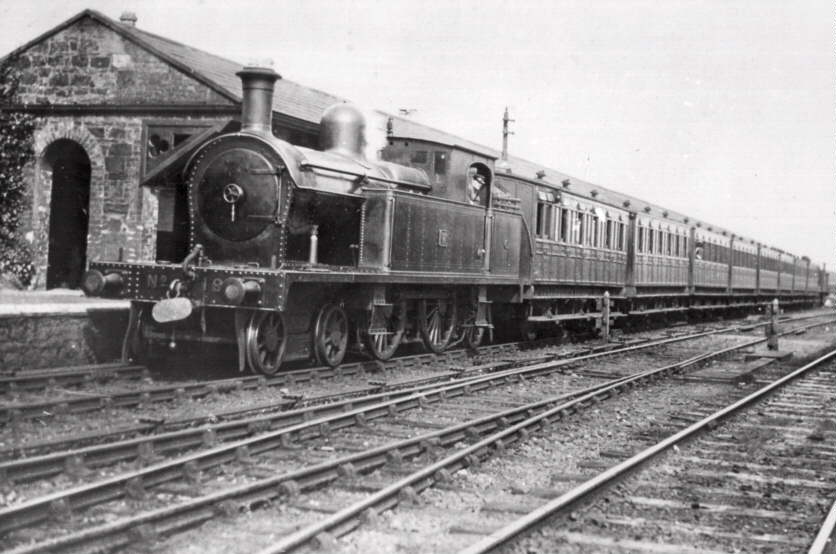
Train No 19 at Comber Station.
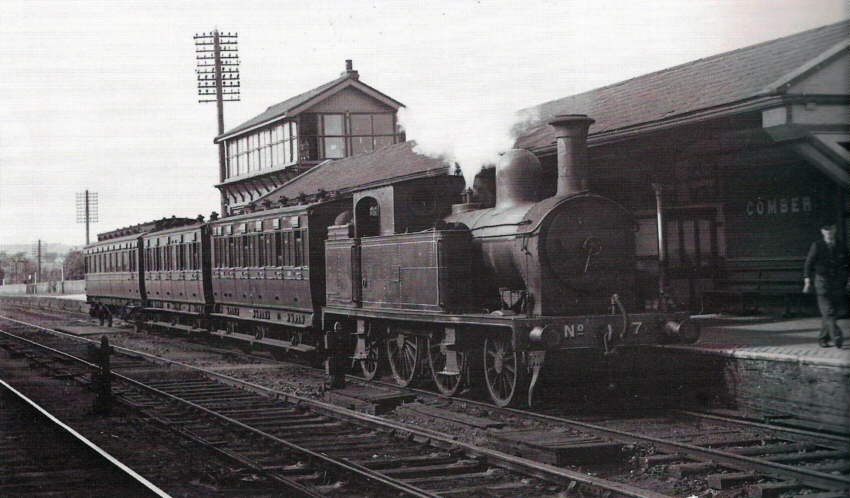
Train No 7 At Comber Station.

The following images with thanks to Mr Colin Little.
Please note these are full sized images.
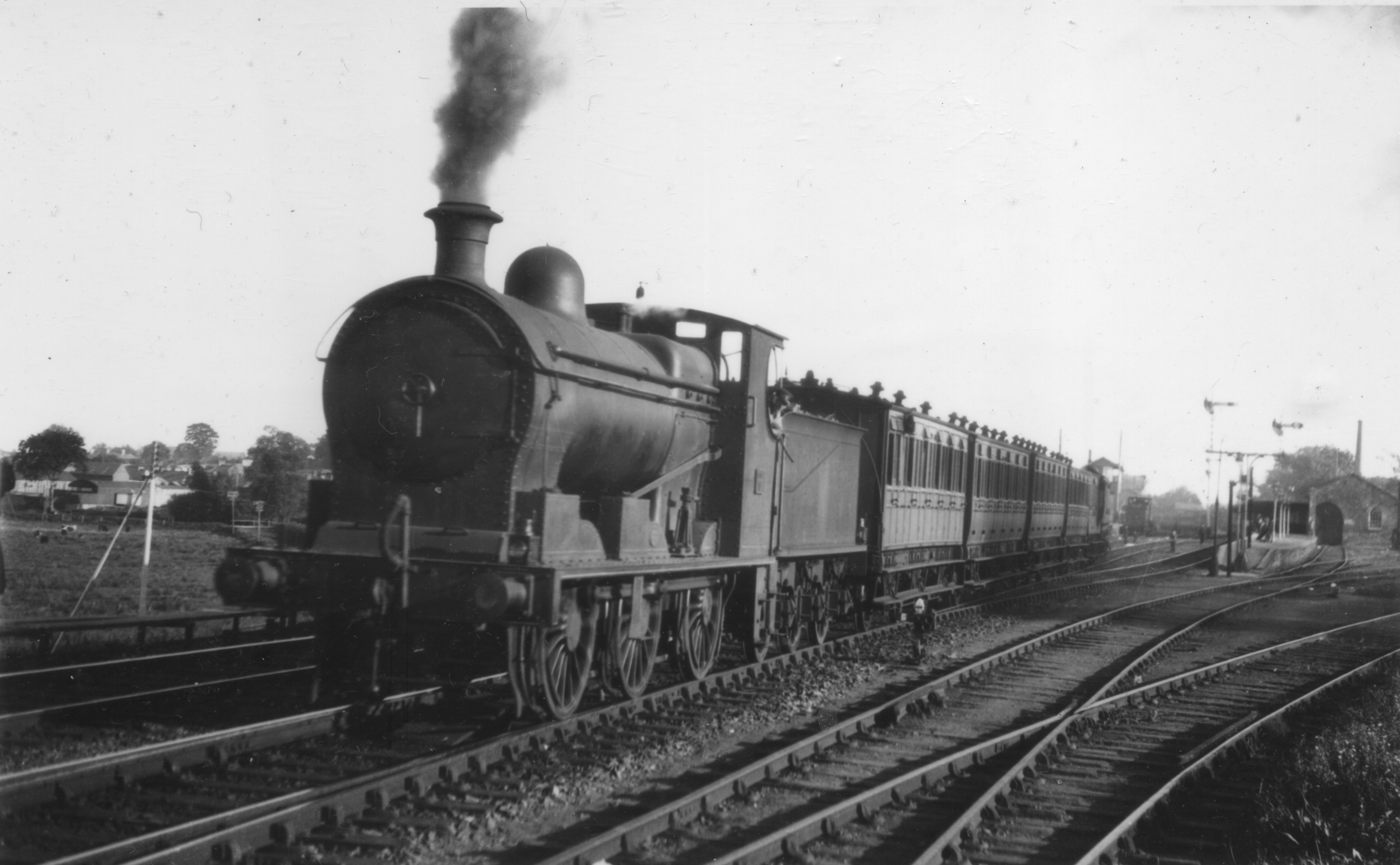
Train No 10 At Comber Station 7th September 1935.

Train No 7 At Comber Station Comber to Glassmoss 20th August 1932.
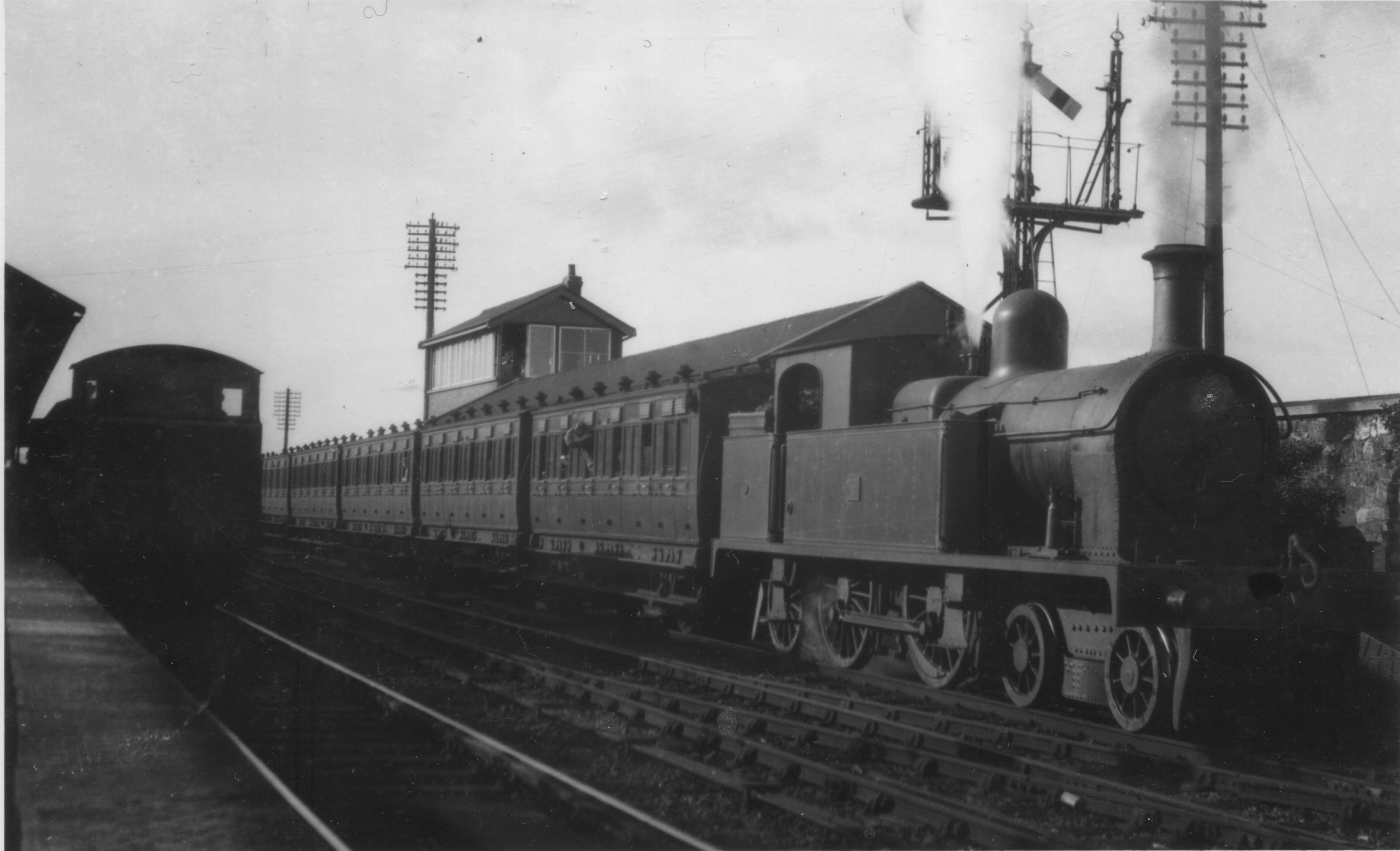
Belfast to Newcastle and D1
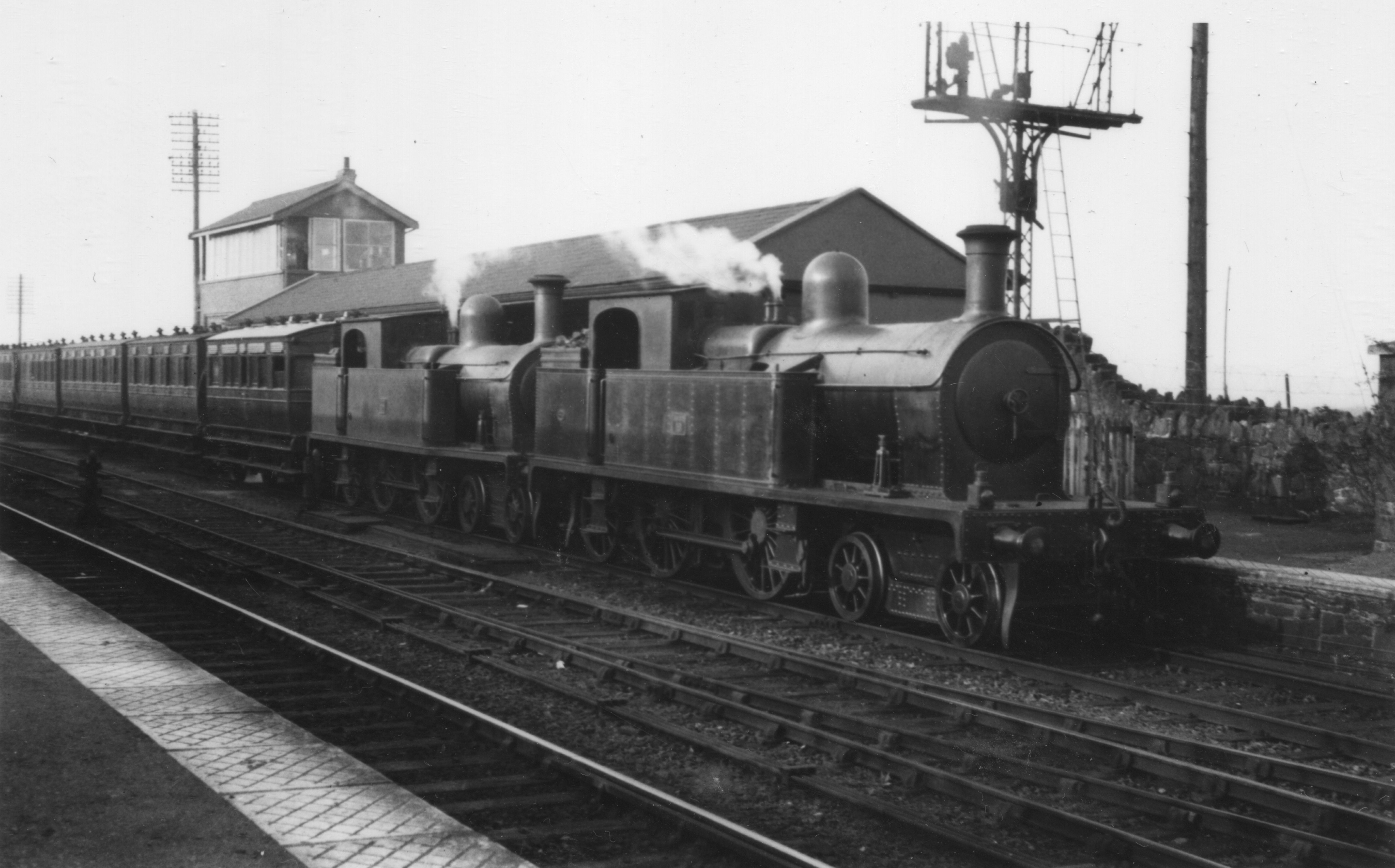
Trains No 18 and 30 Belfast to Newcastle. 11th April 1939

No 15 at Comber.

Comber staff, : Andy MaGowan ... Alex Neill ... Jim Minnis, 4th May 1932.

If you have any comments about what you have just read 
then please contact 
We will be pleased to hear from you.




